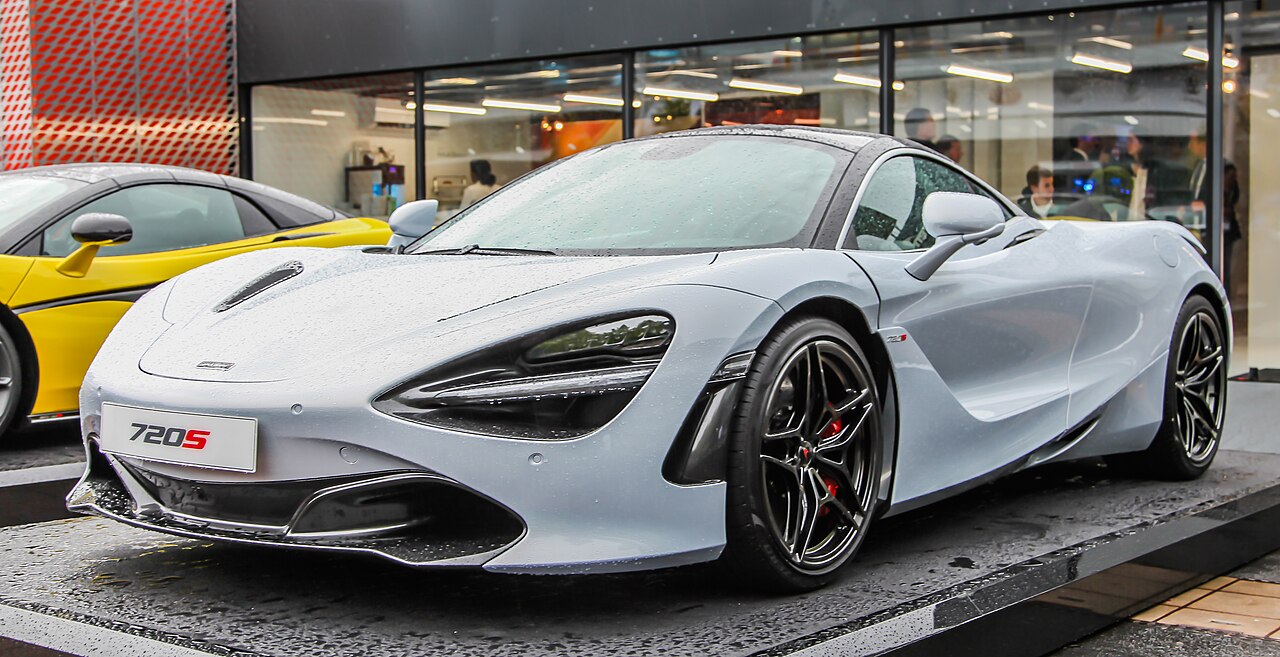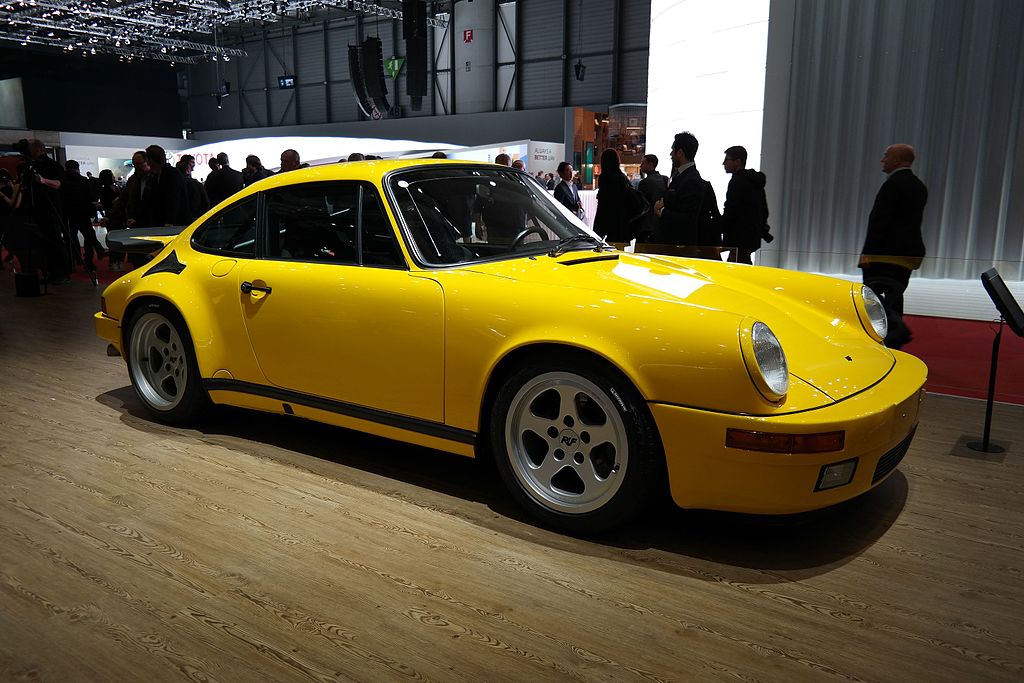McLaren P1
The McLaren P1 debuted in production form at the 2013 Geneva Motor Show. According to McLaren their ultimate objective was to create the best driver’s car in the world on road and track.[23] The last of the limited run of 375 McLaren P1 supercars was delivered to its customer in December 2015.[24]
The McLaren P1 uses an IPAS (Instant Power Assist System) petrol-electric powertrain comprising a 3.8-litre twin-turbo V8 petrol engine, coupled to a single electric motor, collectively known as M838TQ. Combined power output is 916 PS (903 hp). As important as absolute power is the electric motor provides instant torque and offers a range of 11 km (6.8 miles) in full electric mode on the NEDC cycle, which sees emissions drop to zero. In non-electric mode, the P1 returns 34.0 mpg (8.3 l/100 km) on the EU combined cycle, with CO2 emissions of 194 g/km.
Top speed is limited to 217 mph (349 km/h), with a 0–100 km/h acceleration time of 2.8 seconds. The McLaren P1 will power from rest to 200 km/h in 6.8 seconds, and on to 300 km/h in 16.5 seconds – 5.5 seconds quicker than the McLaren F1.
The McLaren P1 features a bespoke braking system developed with Akebono. The specially formulated carbon ceramic discs, coated in silicon carbide, bring the McLaren P1 to a halt from 62 mph (100 km/h) in a distance of 30.2 metres.
Two areas of Formula 1 technology evident on the McLaren P1 include IPAS (Instant Power Assist System), a development of KERS (Kinetic Energy Recovery System) used on Formula 1 cars, and DRS (Drag Reduction System), used to give extra power and straight-line speed at the touch of a button. Similar to Formula 1 cars, the McLaren P1 is made entirely of light-weight carbon fibre.
In addition, the McLaren P1 also features adjustable ride height as part of the new hydro-pneumatic suspension. A RaceActive Chassis Control (RCC) can lower the car by 50mm in Race mode, to produce ground effect aerodynamics.
The McLaren P1 name is also inspired by Formula 1. P1 refers to ‘first place’ or ‘position one’. The name, historically, can also trace back to the McLaren F1 - initially known internally within McLaren as Project 1, or P1.
_(cropped).jpg/1280px-Mercedes-Benz_SLR_McLaren_(8615973055)_(cropped).jpg)
%2C_30._August_2012%2C_D%C3%BCsseldorf.jpg/1280px-McLaren_MP4-12C_%E2%80%93_Frontansicht_(3)%2C_30._August_2012%2C_D%C3%BCsseldorf.jpg)



.jpg/1024px-McLaren_P1_GTR_(16699880902).jpg)


.jpg/220px-FoS20162016_0625_104435AA_(27826166951).jpg)

